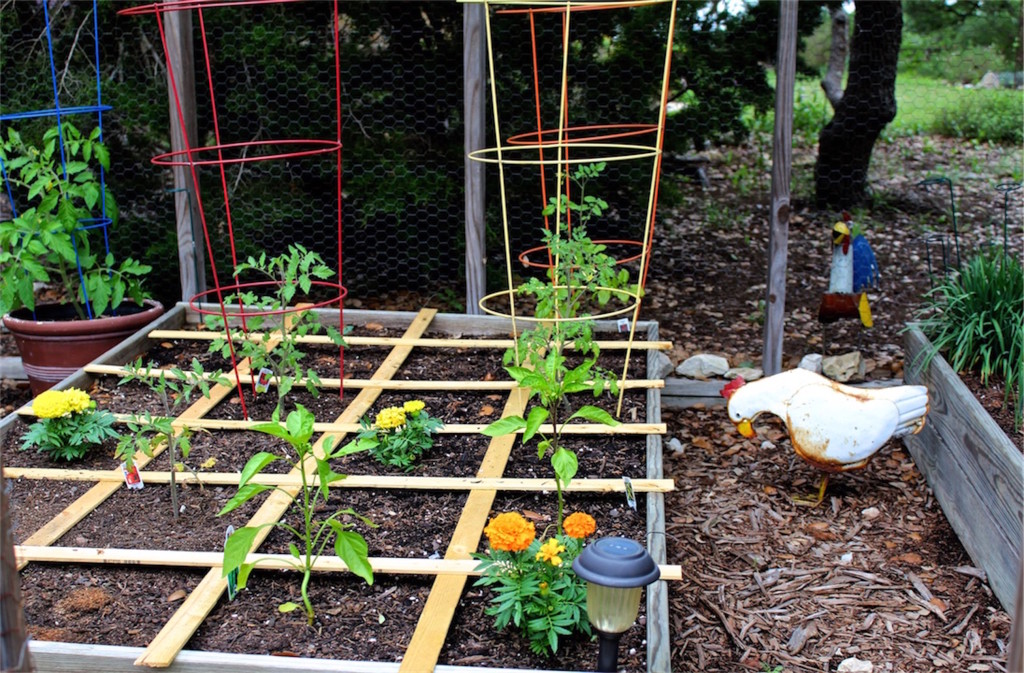
Across the country, the move toward sustainability has people eager for new and creative ways to try their hand at vegetable gardening. Perfect for those who live in urban areas, have small properties or very little time, the concept of ‘square foot’ or ‘postage stamp’ gardening is skyrocketing in popularity. Whether prompted by a desire for the freshest or most local of foods, more and more people are harvesting dinner from their own vegetable gardens.
The roots of the ‘intensive,’ or ‘postage stamp’ gardening concept are believed to date back to France in the 1890s. Another similar approach is ‘square foot gardening,’ a concept devised by Mel Bartholomew in 1981. Both methods promote the dense planting of fruits and vegetables in small spaces with highly fertile soil.
The premise is that by keeping it simple and condensed, growing tantalizing fresh fruits and vegetables becomes much more manageable.
Regardless of which approach you use as your guide, the first step to building a small space garden is finding a suitable spot that will provide enough sun for healthy veggies. Most require at least six hours of direct sunlight. Some tender, cool weather plants, like lettuce or peas, may like a little bit of late afternoon protection from our blazing sun, but in general, find a sunny spot for your garden.
Typically made using raised beds, this style of gardening provides easy access for the gardener to harvest, prune and replant vegetables. Postage stamp gardening allows for a myriad of condensed layouts designed to fit your needs; the square foot plan involves use of 4’ x 4’ grids divided into 1’ x 1’ squares for planting.
One way to help create the best spot for your plants is to place taller vegetables on the north end of the garden and plant the others in descending order of size as you reach the other end. This will prevent taller plants from shading out the other veggies in the bed. Or, if you have some more heat sensitive plants, you can use the taller plants to provide shade for them.
Designed to produce a high-yield and diverse set of crops in a small space, begin with a nutrient-rich soil to kick-start your plants. The idea is to encourage heavy production of plants in a small space using highly fertile blended soils. This is no easy feat here in Central Texas.
While experts recommend different methods for building good soil, the fundamental components include amending our mostly clay soils with compost, sand and other organic matter. Local nurseries offer many different types of compost blends with ingredients like humus, manure, or earthworm castings. Some even sell specific square gardening soil mixes.
Vegetable gardener, Maria Tedder, says her lack of decent soil led her to try square foot gardening. “We have no topsoil at all, so I knew we would need a raised bed to grow vegetables. I read about square foot gardening and it seemed like a great way to get started.”
After her first year yielded great results, Tedder has now expanded her vegetable garden to two 4’ x 4’ garden beds.
“Our experience with this approach has been fabulous. We’ve enjoyed so many fresh vegetables from our garden,” said Tedder.
By placing plants very close together, these small space approaches will help to eliminate weeds and reduce watering needs. Weeds will be crowded out by healthy veggies and the smaller garden means you have less physical area to water. Less weeds and less water? Sounds like a great plan.
Dense planting works well for smaller plants, but be careful not to exceed your space limitations. For example, an indeterminate tomato plant (which can easily grow to be at least 6 feet tall by 3 feet wide and requires heavy-duty staking), will be an unwelcome guest in a garden where each plant’s property lines are 1’ x 1’. Overcrowding the space can also lead to poor circulation and can be a breeding ground for some diseases.
Train your vining vegetables up on poles, supports or trellises as much as possible, using the vertical space in your garden as well as the ground.
Consider adding companion plants to your garden as well. There are many plants that can provide a habitat for beneficial insects that will provide pest control and encourage pollination of your crops.
And, you can use the outer edges of your garden to plant decorative vegetables and plants in your small space garden. Pretty edible nasturtium flowers, bright and colorful Swiss chard and lovely strawberries can create a beautiful frame for your harvest.
If you’re ready to begin your foray into vegetable gardening, you can check out “The Postage Stamp Vegetable Garden” by Karen Newcomb, or “All New Square Foot Gardening” by Mel Bartholomew.
Local Landscape Designer and Garden Coach Diana Kirby provides landscaping tips at www.dianasdesignsaustin.com and writes a garden blog at www.dianasdesignsaustin.com

